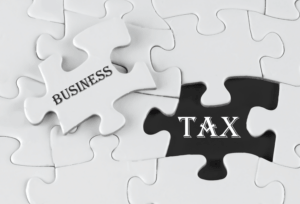Content
- Units Of Production Depreciation Law And Legal Definition
- How Do You Calculate Depreciation Under The Units Of Production Method?
- Accounting Allocations For Overhead & Capital Budgeting
- Module 9: Property, Plant, And Equipment
- When To Use Units Of Production Depreciation
- Services
- Depreciation Guru
- Units Of Production Method: Definition

Many business owners are familiar with the concept of depreciation only as it applies to taxes. Although the depreciation calculation is an important component of your tax filing, there is so much more to depreciation than a line item on your tax return.
It works best when used as a rough estimate before much design work has been completed. The method makes it difficult to allow additional costs for factors such as the size and shape of a building and differences in materials and finishes used on a particular project. The information featured in this article is based on our best estimates of pricing, package details, contract stipulations, and service available at the time of writing. Pricing will vary based on various factors, including, but not limited to, the customer’s location, package chosen, added features and equipment, the purchaser’s credit score, etc.
The functional unit method is used when the estimator has enough historical data available from experience on a particular type of project to relate some end-product units to construction costs. The cubic method of estimate relates the cost of a building to its volume. The best method of depreciation can only be determined by the appropriateness of the method to the partern in which the asset is being used and the nature of business entity. For example a company that specialises in the selling and distributinon of heavy raw materials,… To illustrate, let’s assume that an entity bought a car for $20,000 and no other cost is necessary to put it in use. The firm expects to drive it for 4 years and sell the auto for $4,000 at the end of it service life.
Units Of Production Depreciation Law And Legal Definition
Unit of production method calculates depreciation charge on the basis of actual usage of asset. Although the right name of method is unit of production butunitsof production is widely used. The unit of production method is a method of depreciation in which the depreciation of an asset is calculated using its actual usage and not the passage of time. To calculate the depreciation under the units of production method, we have to divide the depreciable value of the asset by the number of units it is estimated to produce in its lifetime. The units of production method allocate the cost of depreciable assets over its usage rather than some passage of time. The method relates depreciation to the expected production capability of the depreciable asset.
The first variable to compute is the “depreciable cost.” Depreciable cost is the original cost of the asset minus the salvage value. The next variable to compute is “depreciation per unit.” This is calculated by dividing the depreciable cost by the total units expected to be produced by the asset. The third variable to calculate is the actual “depreciation expense,” which is recorded on the income statement.
How Do You Calculate Depreciation Under The Units Of Production Method?
In the above field the Total number of units, Rem, units – Start & Period units are key into the system & based upon this unit & depreciation method system computes depreciation. Since we have many Asset numbers in place, we could not update the standard unit of production table https://www.bookstime.com/ in sap, as it will refer to the same unit for computing the depreciation irrespective of Asset number. As different Asset number has different usage units to cater to this requirement, we will take the help of one ZTable to update the same units corresponding to each asset.
Timespan/ efflux of time also reduces the workable life of the asset. It is charged based on usage of the asset and avoid charging unnecessary depreciation. Under this method, depreciation will be charged based on 5000 units, which for 340 days rather than full-year hence it provides matching concept revenue and cost.
He then taught tax and accounting to undergraduate and graduate students as an assistant professor at both the University of Nebraska-Omaha and Mississippi State University. Tim is a Certified QuickBooks Time Pro, QuickBooks ProAdvisor for both the Online and Desktop products, as well as a CPA with 25 years of experience.
Accounting Allocations For Overhead & Capital Budgeting
Hi Priyadarshan CA,CS,DipIFR,DISA,Cert S/4HANA FI, Proj Mgmt nice post !!! I have a question regarding your Z Table where you enter the UofProd. How did you include this Z Table in your DeprKey to take it into consideration in the calculation ? You also don’t have here how you are updating the Z table with the data from the Measuring Doc. I tried using the UofProd method a few years ago for a customer but we couldn’t since the standard table is not by Asset , we did not have the time to do something custom and also the client wanted to remain standard.
- This depreciation method is often considered the most difficult to calculate.
- In Step 1, we determined the units of production rate for your WidgetMaker 3000 was $0.10/Widget.
- At the inlet side, on the left is a line heater and on the right is a separator.
- And in this method, the depreciation calculation or write-off of assets happens based on the quantum of production.
The unit of production method also enables a business estimate is loss and gains for a period of time. As an example, you just bought a piece of manufacturing equipment for $100,000. The estimated salvage value of the equipment after five years is $10,000 and is expected to produce 9,000 units. Calculate the depreciable cost by subtracting the salvage value from the original cost.
He most recently spent two years as the accountant at a commercial roofing company utilizing QuickBooks Desktop to compile financials, job cost, and run payroll. Units-of-production depreciation is based on the principle that the more you use the asset, the more depreciation you should record. Other techniques include straight-line, double-declining balance, and sum-of-years’ digits. To compute the number of units manufactured, start with the number of units of work-in-process in beginning inventory . Add the number of units of direct materials put into production and then subtract the number of units of work-in-process in ending inventory . In year, when number of units produced high will depreciate more amount and when number of units produced low will depreciate low amount. A gas production unit is actually two pieces of equipment joined together inside a housing.
Module 9: Property, Plant, And Equipment
As required by the Internal Revenue Service, businesses depreciate assets using MACRS when filing their tax reports. However, MACRS did not accurately track losses and profits that an asset generate over time like the unit of production method. Under the units of production method, the amount of depreciation charged to expense varies in direct proportion to the amount of asset usage. Thus, a business may charge more depreciation in periods when there is more asset usage, and less depreciation in periods when there is less usage. It is the most accurate method for charging depreciation, since this method is linked to the actual wear and tear on assets. However, it also requires that someone track asset usage, which means that its use is generally limited to more expensive assets.

This is so that the company can comply with the matching principle of accounting when charging the depreciation expense into the income statement. Units of Production Depreciation allows businesses to allocate the cost of an asset based upon its use. Common in manufacturing, the units of production rate is calculated by dividing the equipment’s cost by its expected lifetime production. Multiplying this rate by the asset’s output for the year gives you the depreciation expense for that year.
With the above integration, asset wise usage can be updated in the Ztable & referring that table depreciation can be posted in Finance. Differentiate between sinking fund depreciation and annuity method of depreciation. The service unit method For example hospitals are designed to accommodate certain number of beds.
When To Use Units Of Production Depreciation
To arrive at the depreciation expense, we will multiply the number of Widgets produced each month by $0.10 to arrive at the depreciation expense for the month. The depreciation expense for the year ending December 31, 2017, using the units-of-production method would be a.$2,730.

Therefore, those autos should be depreciated accordingly to its activity. On the other hand, the different depreciation method might be more appropriate if your vehicle is just staying in a garage for whatever reason. Even though, there is no activity, but the car is still constantly losing value and should be depreciated regardless of its usage.
The asset was not like any other plant & equipment, which is typically fixed in one functional location. Before going into details these are the following areas (pre-requisites), we will touch upon to get the desired solution. Trading companies, service industry etc. will use straight line method rather than units of production method. Depreciation expense is a non-cash expense that is charged to fixed assets to reduce the book value of each asset over its useful life. The following example shows another example application of the units of production method of depreciation. The cost of some assets can be allocated easily according to their estimated production or output rather than their life.
Explain About Units Of Production Method In Depreciation
Method basically applies to manufacture assets where idle time is less and production is efficient. Nowadays, this method is more popular in determining the efficiency of an asset. It provides depreciation for each asset based on its production efficiency. Still, in this method, depreciation can not charge when a machine is idle in the factory due to which true value of the asset can not be derived by using this method. For example, 1000 units produced by the machinery in 320 days and remaining days the machinery was idle. Salvage ValueSalvage value or scrap value is the estimated value of an asset after its useful life is over. For example, if a company’s machinery has a 5-year life and is only valued $5000 at the end of that time, the salvage value is $5000.
And it was expected to have $2,000 salvage value at the end of its useful life. Estimated units of useful life are the estimated total production units that the fixed asset can produce during its useful life. There may be a variety of measurement units for this figure, such as hour, mile or unit, etc. based on the type of fixed asset the company owns. If you take a bite into an apple and let it sit, over time, the bite mark will begin to brown. That browning is a lot like “depreciation.” Depreciation in accounting means to spread the cost of buying an asset over a period of time. As the asset is worn down by wear and tear, technology, obsolescence, depletion, decay, rot or inadequacy, both the cost and value of the asset is written off on the balance sheet.
Units Of Production Method: Definition
During these 4 years of use, the company estimated to drive 100,000 miles in total on it. Depreciation is important as a way for a business to keep track of the estimated book value of an asset as it is used over a period of time. This method of depreciation is good for assets that have greater productivity in their early years of service. The company wants to depreciate the machine using the diminishing balance depreciation method with a rate of depreciation of 30%.
This depreciation method helps you calculate how to reduce the value of a fixed asset in your business based on the number of units it produces in a given period of time. This calculator is for units of production method of depreciation of an asset or, the amount of depreciation for each unit and period.
The depreciable value is equal to the original cost of the asset less its scrap value. This method can not apply to assets other than manufacturing assets such as building and furniture. Under this method, the value of the two same assets may be different because of its usage. This method provided depreciation based only on usage, but in reality, there is an end number of factors that cause a reduction in the value of an asset. In this case, extra depreciation arises due to change in a new method, and we will debit ($2000-$1000) $ 1000 additional amount to profit and loss a/c.